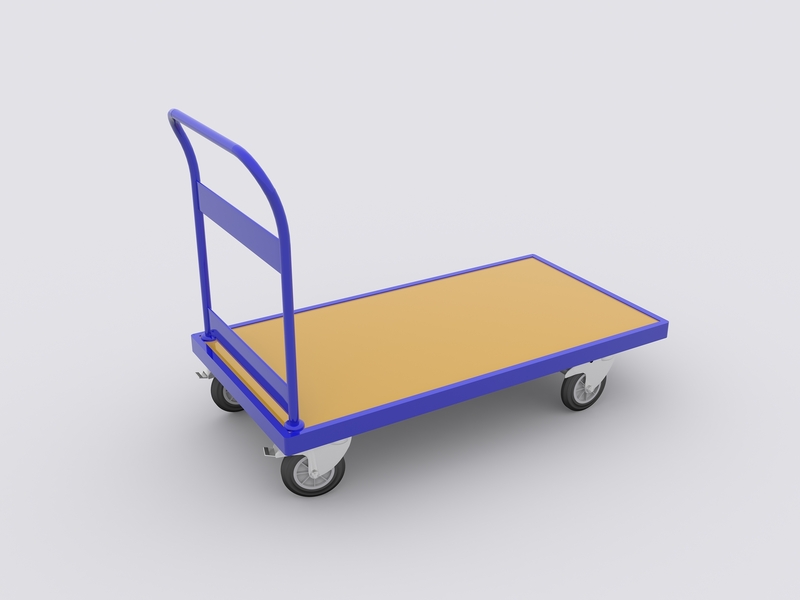Your Ultimate Guide to Pre-Move Decluttering Success
Posted on 19/06/2025
Your Ultimate Guide to Pre-Move Decluttering Success
Moving to a new home is a fantastic opportunity to make a fresh start, shed unnecessary belongings, and simplify your space. However, the process can feel overwhelming. Decluttering before moving is the key to a seamless and stress-free relocation. Whether you're a seasoned mover or it's your first big transition, this comprehensive guide will lead you to pre-move decluttering success, helping you save time, money, and energy.
Why Declutter Before You Move?
Before diving into the step-by-step process, let's address a key question: Why is pre-move decluttering so important?
- Save on Moving Costs: Most professional movers charge based on the volume or weight of your goods. Lightening the load means a lighter bill.
- Streamlined Packing and Unpacking: Fewer items mean less to pack and unpack, making the entire moving process more efficient.
- Start Fresh in Your New Space: Bring only the items that add value and joy to your life, creating room for positive new beginnings.
- Reduce Stress: Clutter can increase anxiety in an already stressful process. Decluttering brings clarity and calm.
- Environmental Impact: Donating, recycling, and responsibly disposing of unwanted items reduces landfill contributions.
By incorporating a smart pre-move decluttering strategy, you set the foundation for moving success and a happier home life.

When Should You Start Decluttering for a Move?
Timing is everything. Ideally, begin sorting and minimizing your belongings as soon as you decide to move--at least 4-8 weeks before your moving day. This gives you ample time to sort items thoughtfully, avoid last-minute chaos, and handle donations or sales properly.
Create a decluttering schedule by breaking large tasks into manageable pieces over several weeks. Tackling one room or zone at a time is far less overwhelming and keeps you motivated.
Pre-Move Decluttering Success: The Step-by-Step Plan
Ready to get started? Here's your ultimate step-by-step guide to decluttering before a move:
1. Gather Needed Supplies
- Sturdy boxes or bins for items to keep and donate.
- Heavy-duty trash bags for discards and recyclables.
- Sticky notes or labels to mark items or areas.
- Permanent markers for labeling boxes.
- Notebook or digital checklist to track progress.
2. Set Clear Decluttering Goals
Define your objectives from the start. Ask yourself meaningful questions, such as: Am I downsizing and need to fit into a smaller space? Do I want to embrace a more minimalist lifestyle? Concrete goals will keep you focused and help guide tough decisions along the way.
3. Use the Four-Box (or Bag) Method
- Keep: Items you use regularly, love, or will certainly need in your new home.
- Donate/Sell: Belongings in good condition that may benefit someone else.
- Recycle: Anything that can be recycled (e.g., old electronics, paper, plastics).
- Discard: Broken, expired, or irreparably damaged items.
Move systematically through each room, placing every item in one of the four categories. Do not skip this process--committing to decisions at this stage simplifies everything.
4. Start with Low-Stress Areas
Begin in non-emotional or low-demand zones--like linen closets, storage rooms, or guest bathrooms. You're less likely to have sentimental attachments here, making decisions straightforward and building momentum for more challenging spaces.
5. Tackle High-Impact Rooms
- The Kitchen:
- Dispose of expired food, mismatched containers, rarely used gadgets or duplicate utensils.
- Consider donating shelf-stable food you won't consume before the move.
- Closets and Bedrooms:
- Follow the one-year rule: If you haven't worn or used it in 12 months, let it go.
- Be mindful of items that no longer fit your current style or lifestyle.
- Living Areas:
- Edit bookshelves, decorative items, and electronics. Keep only your favorites or essentials.
6. Sort Sentimental Items Carefully
Memorabilia and keepsakes can be the trickiest possessions to part with. Allocate special time for these items.
- Set limits: Give yourself a finite amount of space or containers for sentimental belongings.
- Digitize when possible: Scan old photos and documents to preserve memories without taking up physical space.
- Select the best: Keep only items that genuinely evoke joy or meaning.
7. Organize Donations and Selling
- Charities: Many non-profits will accept gently used furniture, clothing, kitchenware, and electronics.
- Online Marketplaces: List valuable items on platforms like Facebook Marketplace, eBay, or Craigslist.
- Garage Sale: Host a sale if you have many items to purge quickly--and earn some extra cash for the move!
Arrange a pick-up or drop-off for all donations well ahead of moving day. Mark sale items and arrange for pickup or shipping before you pack.
8. Dispose of Hazardous and Restricted Materials
Cities and moving companies typically restrict certain materials. Safely dispose of:
- Paints and solvents
- Batteries and electronics
- Cleaning chemicals
- Propane tanks, fire extinguishers, and certain aerosols
Contact your local waste authority for eco-friendly disposal guidance.
Room-by-Room Decluttering Tips
Kitchen
- Check expiry dates on food, spices, and condiments.
- Discard chipped dishes, duplicate utensils, and single-use gadgets.
- Downsize cookware by keeping only favorite and frequently-used pieces.
Bedrooms and Closets
- Remove clothing that no longer fits, matches your lifestyle, or is worn out.
- Don't forget shoes, bags, jewelry, and accessories.
- Pare down extra linens and bedding.
Living Room
- Cull books, magazines, and DVDs to only the ones you love.
- Review decor--keep only the meaningful or essential pieces.
- Test electronics and discard broken or outdated devices.
Garage, Basement, and Storage Areas
- Donate or sell unused tools, equipment, or seasonal items.
- Properly dispose of old paint, chemicals, and outgrown sports gear.
- Sort holiday decorations and keep only what you regularly use.
Maintaining Momentum: How to Stay on Track
Decluttering for a move can be a marathon, not a sprint. Here's how to remain motivated:
- Set mini-deadlines: Assign target dates for specific rooms or tasks.
- Track progress: Checklists and visual progress boards can keep you motivated.
- Celebrate milestones: Treat yourself after conquering difficult areas or donating a carload of stuff.
- Enlist help: Involve family or friends to make the process more enjoyable and efficient.
Remember, your end goal is a lighter, less stressful move and an uncluttered home.
Packing After Decluttering: Best Practices
- Pack by category, not location: Group similar items and keep them together for easier unpacking.
- Label all boxes clearly: Mark contents and intended room in your new home.
- Protect fragile items: Use bubble wrap, towels, or clothing as cushioning.
Since you've already decluttered, packing will be quicker and far less overwhelming.
What to Do With Items You're Unsure About
Every move will leave you uncertain about a few things--those "maybe keep" objects. Instead of procrastinating:
- Pack an "undecided" box, label it, and store it for 30-90 days after the move. If you haven't needed anything from it by then, it's a sign to let go.
- Request a second opinion from a trusted friend or family member.
Common Mistakes to Avoid During Pre-Move Decluttering
- Decluttering and packing at once: Separate your decluttering, then pack only what's left--it's far more efficient.
- Leaving it to the last minute: Without time, you risk taking clutter with you or making hasty (and regrettable) decisions.
- Getting stuck on sentimentality: Respect your feelings, but use your move as motivation to let go of the past and focus on the future.

Frequently Asked Questions about Pre-Move Decluttering
What should be the first thing to declutter when planning a move?
Begin with storage areas you seldom use. These spaces usually house the most non-essential clutter and will build your confidence for trickier decisions.
How can I make decluttering less overwhelming?
Break it down room by room or category by category. Set timers, listen to music, and recruit help for accountability and support.
What do I do with unwanted furniture or large items?
- List them for sale online or through estate services.
- Check if local charities offer pick-up services.
- Contact your municipality for bulk waste pick-up days or recycling events.
How do I keep from re-accumulating clutter after my move?
Adopt a one-in, one-out policy. Make conscious choices before purchasing and schedule regular decluttering sessions.
Final Thoughts: Embrace the Opportunity
Moving is more than just a relocation--it's a unique chance to assess your possessions, keep only what serves you, and set up your new home for success. By following this ultimate pre-move decluttering guide, you'll enjoy a smoother, faster, and more mindful move.
Start early, stay organized, and embrace the process. Your post-move life will thank you!
If you found these pre-move decluttering tips helpful, share this article with friends and family preparing for their next move. Happy decluttering!



 Guide price for the hire of a Transit Van /up to 300 cu ft/.
Guide price for the hire of a Transit Van /up to 300 cu ft/.